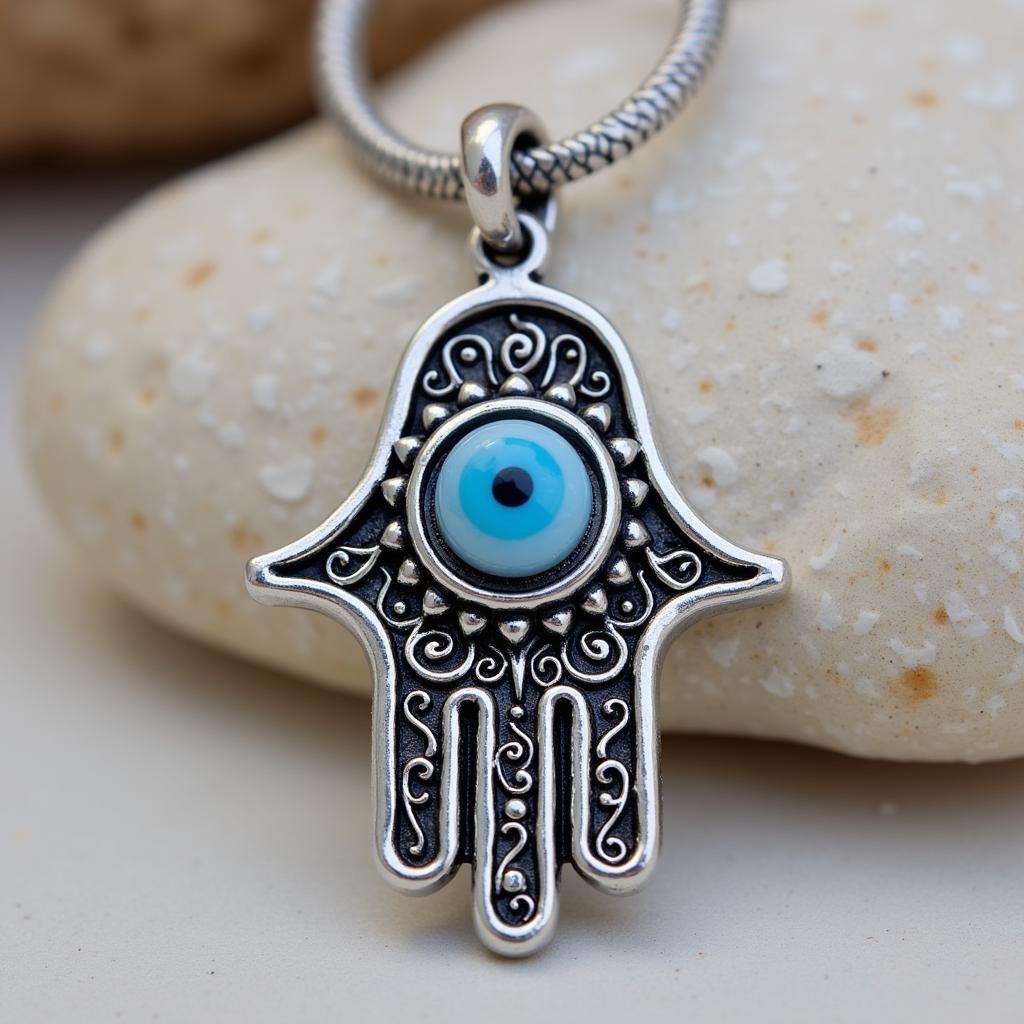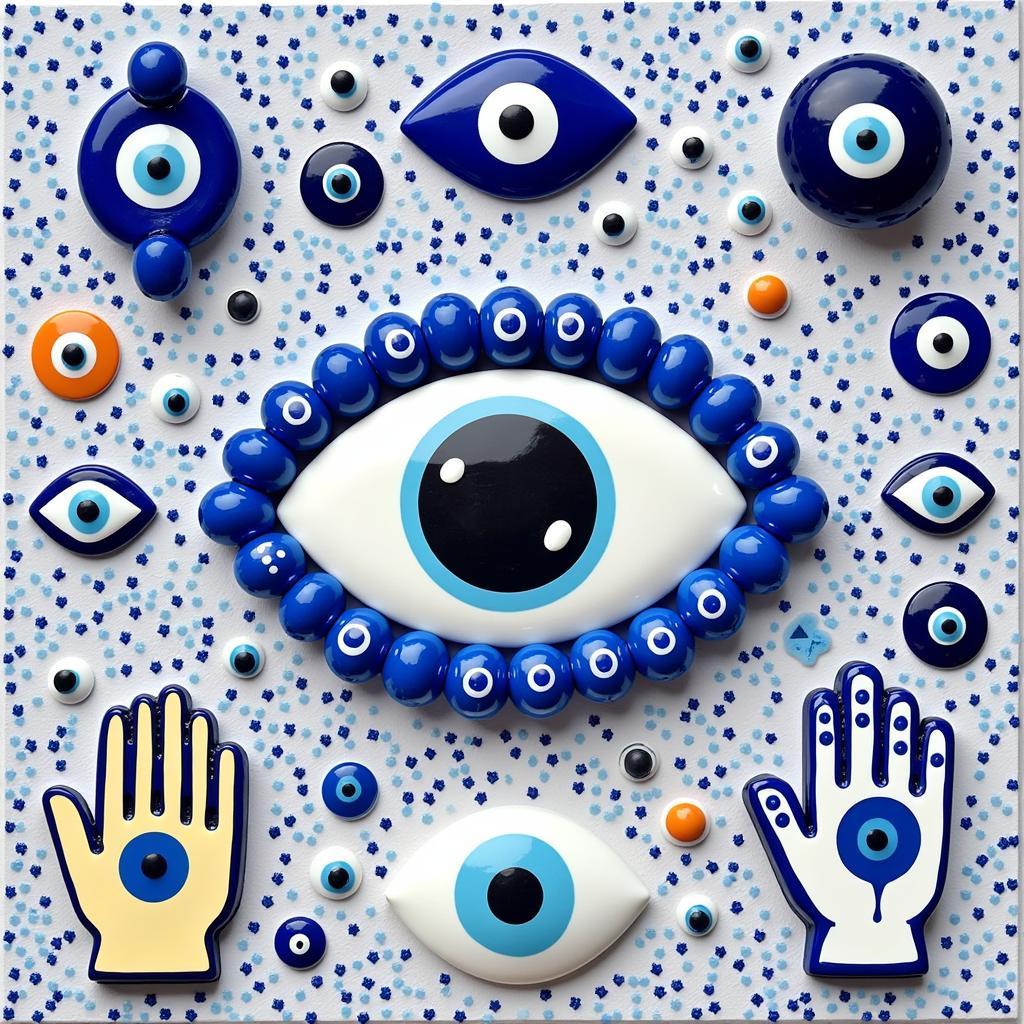The Hamsa Evil Eye is a popular symbol found in various cultures, often used as a protective amulet against negative energy. Its distinctive design, resembling an open hand with an eye in the center, makes it instantly recognizable. But what exactly does it symbolize, and how did it become associated with something as passionate as football fandom?
Unveiling the Hamsa: A Symbol of Protection and Good Fortune
 The Hamsa Hand Symbol
The Hamsa Hand Symbol
The hamsa, also known as the Hand of Fatima or the Hand of Miriam, has roots in ancient Mesopotamia. The word “hamsa” itself derives from the Arabic word for “five,” referencing the five fingers of the hand. While its origins are debated, its meaning as a protective talisman has remained consistent throughout history.
Ancient Origins and Cultural Significance
Different cultures have embraced the hamsa, attributing their own beliefs and interpretations to its power.
- Middle East and North Africa: In these regions, the hamsa is predominantly seen as a defense against the “evil eye,” a malevolent glare believed to bring bad luck or misfortune.
- Judaism: The hamsa, known as the Hand of Miriam, represents the hand of Moses’ sister and is associated with the five books of the Torah.
- Islam: Known as the Hand of Fatima, it symbolizes the hand of the Prophet Muhammad’s daughter and represents faith, good luck, and protection.
The Power of Five
The five fingers of the hamsa are often linked to different interpretations depending on the cultural context. Some associate them with the five senses, while others connect them to religious figures or principles.
The All-Seeing Eye: A Ward Against Negative Energy
 The Evil Eye in Different Cultures
The Evil Eye in Different Cultures
At the heart of the hamsa lies the eye, a powerful symbol found in numerous cultures. Known as the “evil eye,” “nazar,” or “mati,” it represents a look or stare believed to inflict harm, misfortune, or even illness.
Origins of the Evil Eye Belief
The belief in the evil eye is ancient, dating back to at least 3000 BCE, with evidence found in Mesopotamian cuneiform texts. It was thought that envy, jealousy, or even excessive admiration could trigger the evil eye.
Combating Negativity with the Evil Eye Symbol
Ironically, the evil eye symbol itself is used to ward off the negative effects of the evil eye. The logic being that “like repels like.” By wearing or displaying the evil eye symbol, one is believed to deflect harmful energy and protect themselves from harm.
The Hamsa Evil Eye in Football: A Modern Talisman for Fans
 Football Fans Wearing Hamsa Evil Eye Amulets
Football Fans Wearing Hamsa Evil Eye Amulets
While the hamsa evil eye has ancient roots, it remains relevant in contemporary culture, even finding its way into the world of football. Fans, known for their passionate support and superstitious nature, have adopted the hamsa evil eye as a symbol of protection, luck, and a visual representation of their unwavering faith in their team.
Warding Off Bad Luck and Supporting the Team
Football is a game of skill, strategy, and, some might argue, a touch of luck. Fans often turn to superstitions and rituals to support their team, believing they can influence the outcome of a match. The hamsa evil eye, with its history of protection and good fortune, becomes a natural choice for a lucky charm.
A Symbol of Unity and Shared Passion
Beyond its protective qualities, the hamsa evil eye can serve as a unifying symbol for fans. Wearing it becomes a way to visually identify with fellow supporters, creating a sense of camaraderie and shared passion for their team.
Conclusion: The Enduring Power of Symbols
The hamsa evil eye, with its rich history and cross-cultural significance, continues to resonate with people today. From ancient beliefs in protection to its modern interpretation as a symbol of luck and support, it demonstrates the enduring power of symbols to connect us to the past, provide comfort in the present, and carry meaning into the future.